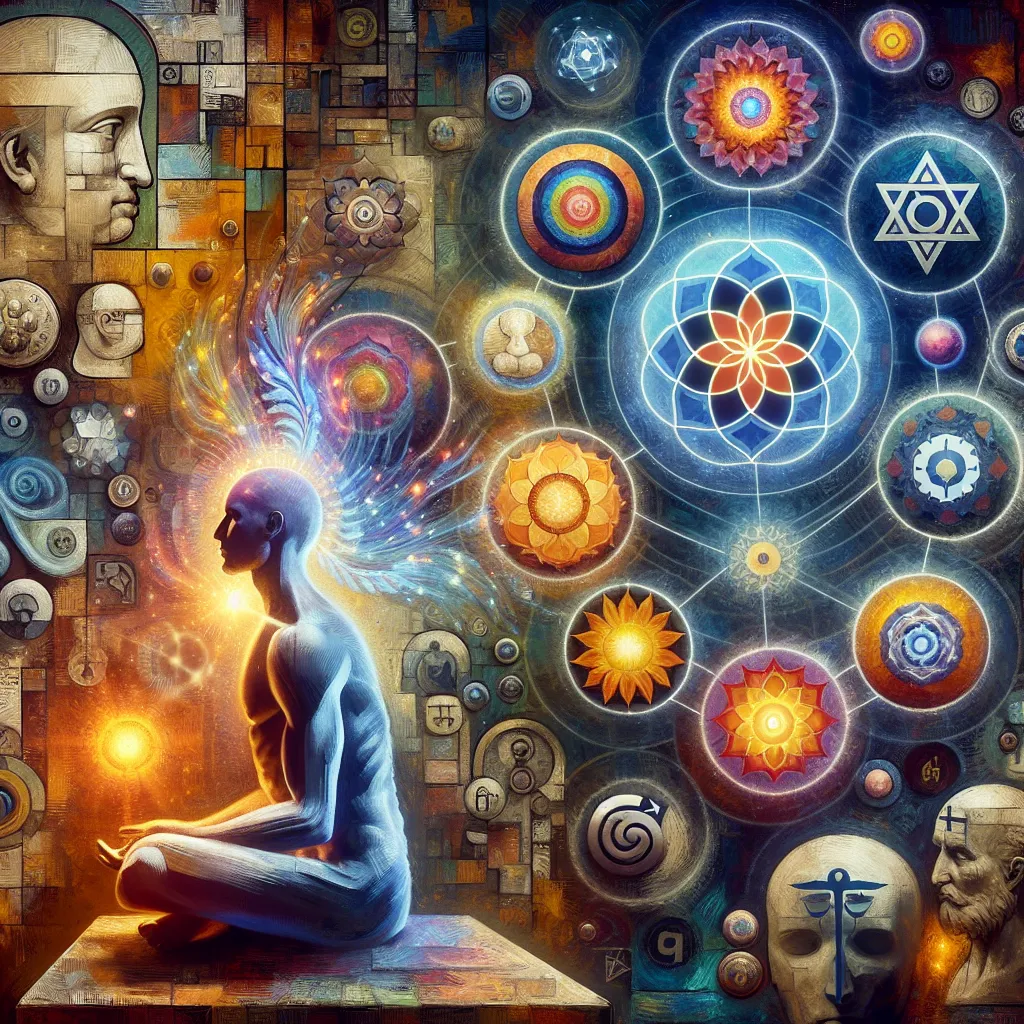
- Published on
- Authors

- Name
- You
Chakras and Modern Psychology: The Intersection of Energy and Mind
In the realms of both ancient spiritual practices and contemporary psychological research, understanding the human experience has always been a central pursuit. One such fascinating intersection occurs between the ancient Indian system of chakras and modern psychological practices.
The Seven Chakras
| Chakra | Location | Psychological Association | Color | Element |
|---|---|---|---|---|
| Root (Muladhara) | Base of spine | Safety, survival, grounding | Red | Earth |
| Sacral (Svadhisthana) | Lower abdomen | Creativity, sexuality, emotional wellness | Orange | Water |
| Solar Plexus (Manipura) | Upper abdomen | Confidence, personal power, self-esteem | Yellow | Fire |
| Heart (Anahata) | Center of chest | Love, compassion, emotional balance | Green | Air |
| Throat (Vishuddha) | Throat | Communication, expression, truth | Blue | Ether |
| Third Eye (Ajna) | Forehead | Intuition, insight, intellect | Indigo | Light |
| Crown (Sahasrara) | Top of head | Spirituality, enlightenment, connection | Violet | Cosmic Energy |
Understanding Chakras
Chakras are often described as spinning wheels of energy located along the spine, each corresponding to different physical, emotional, and spiritual aspects of being. Balancing these energy centers can lead to overall harmony and health.
Modern Psychological Practices
Modern psychology, with its roots in both scientific research and therapeutic techniques, seeks to understand and treat the mind. Practices such as Cognitive Behavioral Therapy (CBT), Mindfulness, and Somatic Experiencing focus on mental and emotional health, aligning closely with the goals of chakra work.
Cognitive Behavioral Therapy (CBT)
CBT focuses on changing unhelpful cognitive distortions and behaviors, improving emotional regulation, and developing personal coping strategies. This can be related to balancing the Solar Plexus Chakra, which governs our confidence and personal power.
Techniques in CBT:
- Cognitive restructuring (identifying and challenging negative thoughts)
- Behavioral activation (engaging in activities that improve mood)
- Exposure therapy (gradually facing fears)
Mindfulness and Meditation
Often used in therapeutic settings, mindfulness encourages present-moment awareness and can reduce stress and anxiety, similarly to practices that engage the Third Eye and Crown Chakras, opening intuition and a sense of spiritual connection.
Mindfulness Practices:
- Mindful breathing
- Body scan meditation
- Loving-kindness meditation
Somatic Experiencing
This approach focuses on bodily sensations to heal trauma, resonating with the lower chakras (Root, Sacral, and Solar Plexus) which are closely linked to our survival instincts and emotional well-being.
Somatic Techniques:
- Grounding exercises
- Tension and relaxation cycles
- Developing interoceptive awareness
Integration of Chakra Work and Modern Psychology
Combining these two distinct yet complementary systems offers a holistic approach to mental and emotional health.
Case Study: Healing Anxiety
Consider a case where an individual experiences chronic anxiety. Integrating chakra work with psychological practices can involve:
- Root Chakra (Muladhara): Grounding techniques, such as walking barefoot on natural terrain, to enhance feelings of safety.
- CBT Strategies: Identifying and challenging catastrophic thoughts related to anxiety.
- Sacral Chakra (Svadhisthana): Engaging in creative activities that reintroduce joy and emotional expression.
- Mindfulness Practices: Daily meditation to maintain present-moment awareness and reduce overall stress.
Conclusion
The intertwining of chakra work and modern psychology provides a rich tapestry of methods for enhancing mental and emotional well-being. By embracing both ancient wisdom and contemporary science, individuals can cultivate a balanced life full of health and harmony.
Integrate these approaches within your life or practice and witness the transformative power of combining energy work with psychological insight!
